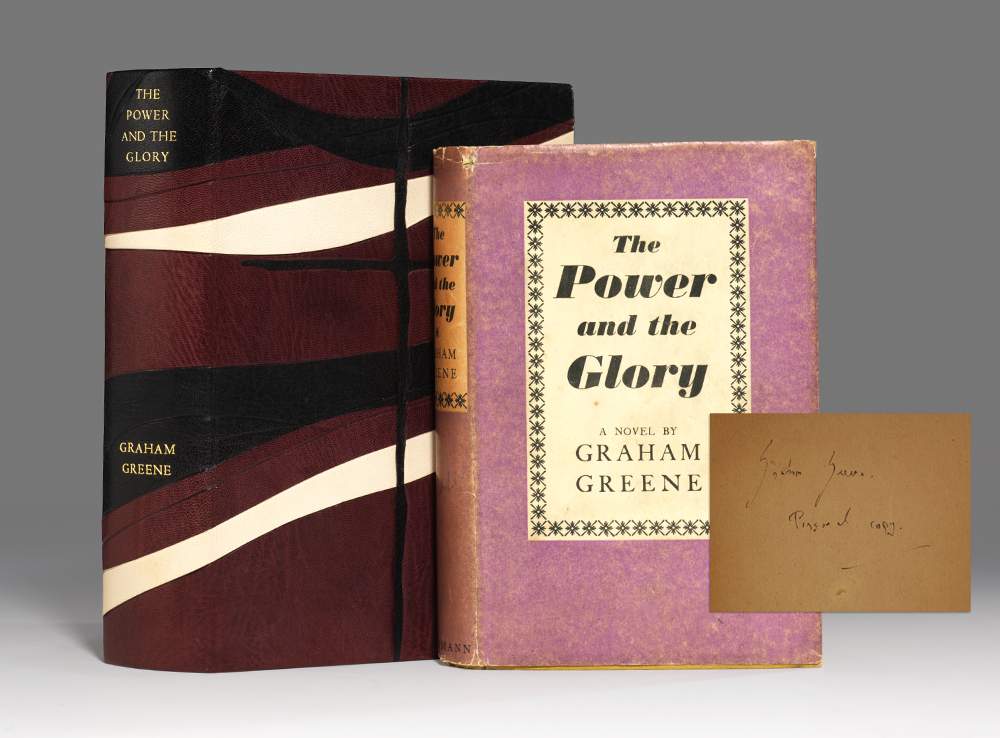Description
AN EXTRAORDINARY OFFERING: “PERSONAL COPY” OF GRAHAM GREENE’S GREATEST WORK, THE POWER AND THE GLORY,
WITH HIS OWNERSHIP SIGNATURE
GREENE, Graham. The Power and the Glory. London and Toronto: William Heinemann, (1940). Octavo, original yellow cloth, original dust jacket.
First edition of Greene’s masterpiece, one of only 3500 copies published, this copy formerly belonging to Greene himself, with his ownership signature and inscription (“personal copy”) on the front free endpaper, accompanied by a corroborating typed statement signed by him.
“This novel about a haunted, driven, desperate priest is probably Greene’s greatest? His greatest novel, however, had to wait ten years for success. The print run of the first edition, according to Greene, was 3500 copies, only a thousand copies more than his first novel 11 years before? Greene really had little chance, bringing out his greatest book in the middle of [World War II]? Unless books either allowed the general reader to escape from war? or provided information about war or spies, the chances of their becoming bestsellers were remote” (Sherry II:39-40). The book did, however, win the 1940 Hawthornden Prize, and proved popular enough in France to earn it the attention of and two condemnations from Roman Catholic bishops. In 1953, furthermore, the Church demanded changes to the text—changes Greene, while troubled by the ecclesiastical rebuke, did not make. “Later, when Greene had an interview with Pope Paul VI, the Pope told Greene that among the novels of his he had read was The Power and the Glory. Greene responded that it had been condemned by the Holy Office? [The Pope replied,] ‘Mr. Greene, some parts of your books are certain to offend some Catholics, but you should pay no attention to that” (Sherry II:43). Emerging from five weeks spent in Mexico in 1938 to report on religious persecution, Greene’s remarkable novel evokes “the territory that Greene knew best”—“the agonizing confusion of life in the twilight region between salvation and damnation” (Shelden, 224). “The Power and the Glory suggests a kind of sanctity still achievable in a mundane world” (Stringer, 544). Miller 20a. This copy inscribed on the front free endpaper by the author with his signature and the words “Personal Copy,” accompanied by a typed noted signed by Greene that reads: “March 10, 1990. This is to certify that this copy of The Power and the Glory is my own personal file copy, and bears my ownership signature. [signed] Graham Greene. Antibes.” Interior generally clean with light embrowning, mild toning to spine, light soiling to boards. Dust jacket with light edge-wear, mild toning to spine, small closed tear to front flap. A unique opportunity to obtain an exceptionally important copy of a modern literary landmark.




